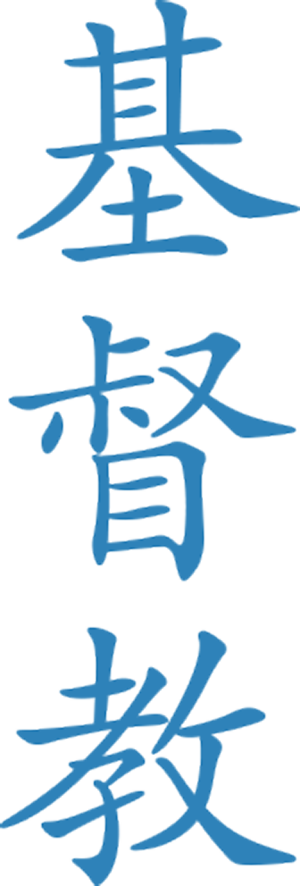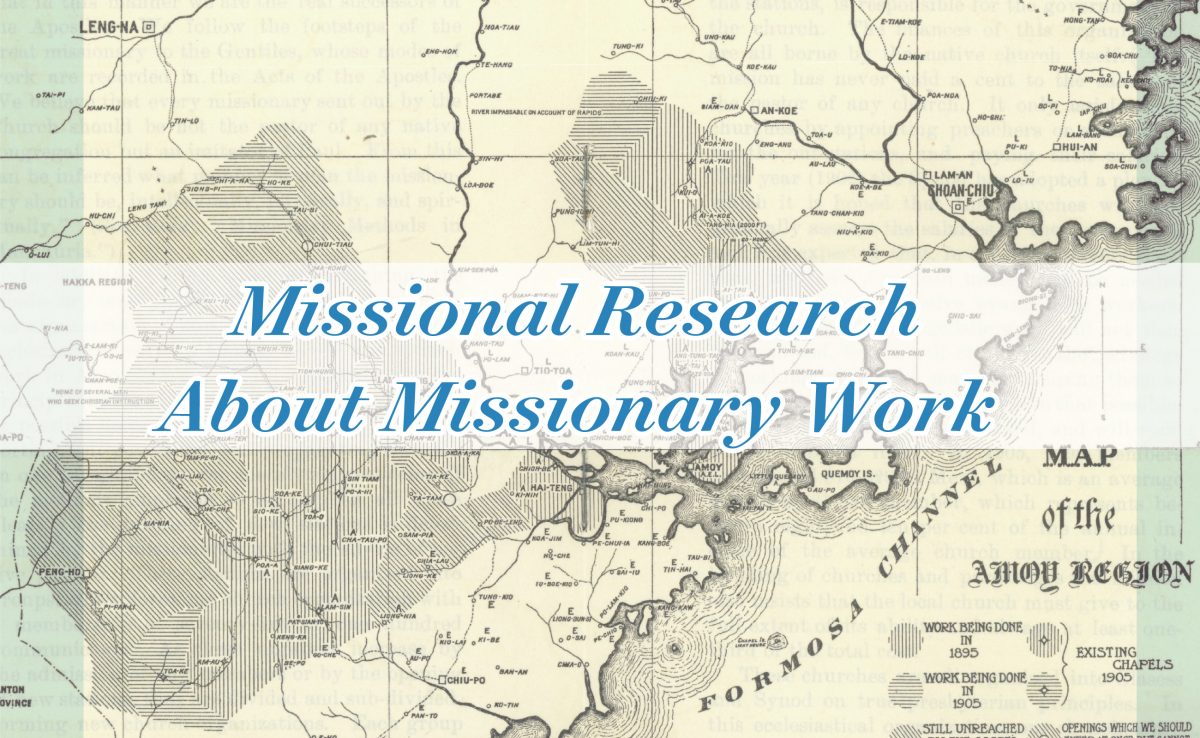Missional Research About Missionary Work
How One Faculty-Student Project Became a Book
A little more than six summers ago, Dr. Gloria Tseng sent six Hope students into the Joint Archives of Holland on a mission that was both institutionally and educationally missional: Conduct research for eight weeks and then write a scholarly paper for presentation purposes about any aspect of Reformed Church in America missionaries to China.
In 2020, those papers for presentations will turn into papers for publication as chapters in a new book edited by Tseng. With a proposed title of Cross-Cultural Encounters: The Amoy Mission of the Reformed Church in America, it will be published in the “Studies in Chinese Christianity” series of Wipf and Stock.
At the time the research started in the summer of 2013 with three students, and even when it extended into the summer of 2014 with three more, Tseng hadn’t considered turning their works into a book. But encouragement from colleagues a few years later to do exactly that got the 17-year veteran of the Hope faculty thinking: Good content is there, now it’s time.

“In terms of subject matter, this is an important spiritual heritage of the college,” explains Tseng, an associate professor of history who is also in the process of completing her own authored book, The Search for a Chinese Church: Protestantism in Twentieth Century China, for Bloomsbury Press. “It’s also an important legacy of the denomination [with which Hope is affiliated]. And these are Hope students doing that research. All the connections were in line. In terms of the field of global Christianity, this is a growing academic field. Plus, not many people have written about the RCA in China.”
Now, six Hope alums have, with mentoring from Tseng; Dr. Marc Baer, then the Department of History chair; the late Dr. Jonathan Hagood, associate professor of history and associate dean for teaching and learning; and, Geoff Reynolds, the Mary Riepma Ross Director of the Archives. Three students researched and wrote about individual missionaries in the summer of 2013: Eric Dawson ’14 on agriculturalist-turned-evangelist William Angus; Rebekah Llorens ’15 on medical missionary John Otte (Hope Class of 1883); and, Madalyn Northuis ’14 deJonge on missionary teacher and principal Tena Holkeboer. In the summer of 2014, three students researched and wrote on thematic topics: Tori Henry ’15 Longfield about missionary wives; Katelyn Dickerson ’15 about missionary nurses; and, Claire Barrett ’15 about wartime relief.
Additionally, the book has one more Hope connection: Its preface is by Rev. Dr. Dennis Voskuil, who is president emeritus of Hope, a past president of Western Theological Seminary and a former Hope professor of religion specializing on church history. As it happens, Voskuil had a great uncle, Henry Voskuil, who was an RCA missionary to China from 1907 to 1944.
“In terms of subject matter, this is an important spiritual heritage of the college … It’s also an important legacy of the denomination [the Reformed Church in America, with which Hope is affiliated]. And these are Hope students doing that research.”
Tseng explains that the RCA mission was relatively small in China and limited to southern Fujian province, a seaside region in southeast China. Larger denominations than the RCA were present in the region, yet the RCA’s work was equally influential. “The 19th- and 20th-century missionary movement into Asia and Africa was historically significant,” Tseng says. “[This book] gives some insight into what was going on in the local conditions of the province at those times. The Chinese civil war, banditry, civil unrest. It’s usually-overlooked perspectives of mission work that the volume sheds light on.”
Each subject area provided its own unique rewards to its student investigator. When Longfield began to decipher the elegant cursive handwriting of three missionary wives’ letters sent from China to the U.S. in the early 20th century, she marveled at the resolve and courage beneath their dignified penmanship. Many times, these women were left alone with four or five children for weeks on end, often unable to speak the language, not knowing what had happened to their husbands, not knowing if they could get out of the country if something tragic happened as a war raged around them. Still, through it all, they supported their husbands’ ministries and their children’s needs, and spread the Gospel by example, too.
“We often hear about single women out on the missionary field. We, of course, hear about the men. But we rarely hear about married women,” says Longfield, who was a history major and Mellon Scholar as a student and is now the digital liberal arts librarian at Hope. “It was such an interesting experience to try and find those voices almost entirely through their letters. They’re not documented. They’re not in [RCA] reports very often unless they’re shipping [the women] home.”
In uncovering their untold stories, Longfield noticed something interesting was happening in the archives with the women’s letters, which were mostly written to their mothers, a few to sisters, and some to their husbands if the wives had been sent home to the U.S. for health or safety reasons. “Their letters, so then their stories, in most cases were actually stored in their husbands’ collections. So, I pulled them out and created their own collection in my position as an archive assistant and under Geoff’s direction.”
Dawson, for his part, remembers staring at a black-and-white portrait of a gentle giant whose poems introspected his evangelistic work in China during the Great Depression and World War II and immediately feeling a literary and spiritual kinship with a man he never imagined to exist. William Angus was a sensitive and observant soul who took to his work with deep commitment and uncommon insight. And that showed up in his poetry.
“Not to be too cliché but in some way, I feel like he chose me more than I chose him [when the project started],” says Dawson, a history major and creative writing minor at Hope who is now a staff social worker at the School of Continuing Studies at Georgetown University. “There were three binders of poetry that I came across in the archives, and it didn’t look like anyone had really used them before in terms of research. So, having a personal interest in writing and poetry myself, that was a pretty easy primary source to gravitate towards and be like, ‘These are mine.’”
As Dawson read the poems and reflected on their sentiments alongside photos of Angus, he realized he was researching a man with steadfast convictions and unusual openness. Due to his research in secondary sources about missionary work, Dawson knew that oftentimes Chinese people were expected to conform to Western ways when missionaries came to town. Angus, though, appeared to be an exception to that practice.
“In the photos, William Angus was this Goliath among the Chinese people,” says Dawson. “He was 6-foot-4. He was this huge American, writing poetry presumably in the mornings or at night. So that made him different. But he was also different in that he seemed to be much more aware of and worked within cultural dynamics. He noticed the cultural differences, he noticed ways in which the Chinese were hoping to use the missionaries’ American status to their own benefit. He noticed these very, very human things and didn’t suggest they were bad; he just simply noticed they were there.”
Then Angus wrote poems about it. And a substantial number of them, too. In those poems written more than 75 years ago, Dawson found a lesson for his 21st-century life.

“William Angus’ poems displayed a level of self-awareness and doubt that I did not expect from an American Christian missionary,” Dawson says. “Witnessing his transparency inspired my faith journey primarily by reinforcing — and normalizing — the relationship between doubt and belief.”
The other four chapters in the book are as rich and multi-faceted as those on the missionary wives and William Angus, Tseng says. She knows this because she has spent the past two-and-a-half years meticulously reading and rereading each chapter, going about the serious work of editing, revising and checking interpretations as well as every single footnote, about 300 in all. It was all worth it, not just due to the outcome but because of the process.
“For students, any opportunity to do archival research brings their history experience so much further because that’s what historians do,” Tseng declares. “History is not, as many people think, a bunch of facts they simply memorize. History is a process of investigation and story-telling. So, this was a valuable experience for students who wanted to go on in history, or who simply wanted to hone their research skills, analytical skills and writing skills. These are skills that are transferable to other work in life.”
Dawson and Longfield are two prime examples of that. Thanks to Tseng, they are now published authors, too.
Editor’s note: Although readers will have to wait until next year to read the book’s chapter about John Otte, the August 2011 issue of News from Hope College includes a story about him by Judy Tanis ’67 Parr, John deVelder ’65 and Linda Walvoord ’64 deVelder.
For more about Gloria Tseng’s additional book project, The Search for a Chinese Church: Protestantism in Twentieth Century China, please vist the college’s Stories of Hope blog for a story by Jim McFarlin ’74.





2 thoughts on “Missional Research About Missionary Work”
Comments are closed.